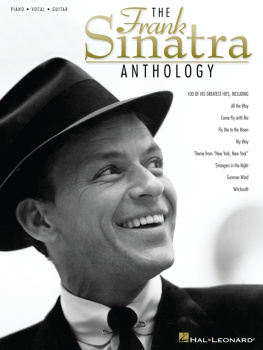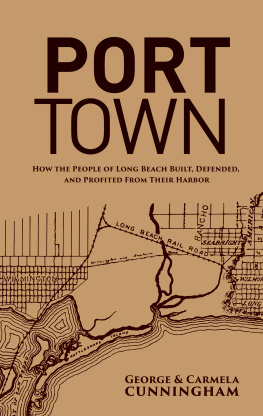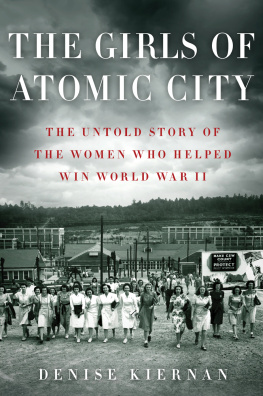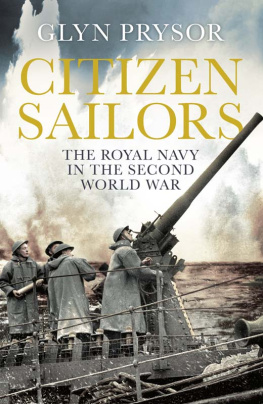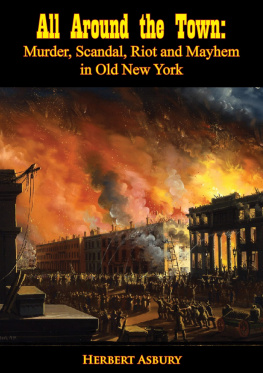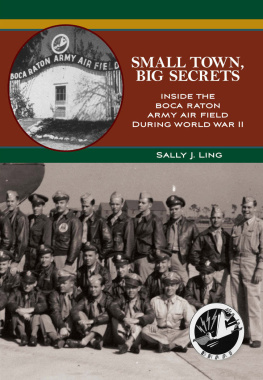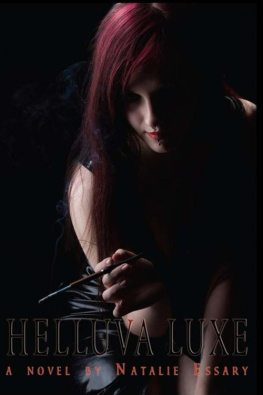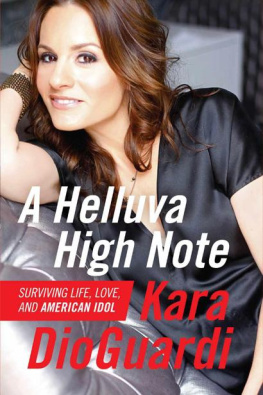Acknowledgments
When I heard Seymour Wittek tell of April 24, 1943, in the Port of New York, the day he joined with fellow coastguardsmen in fighting a fire on an ammunition boat that threatened to touch off a massive explosion, World War II didnt seem so distant. Mr. Wittek seemed equally proud of his days in wartime New York when he took out a photograph from June 43: Seymour of the Bronx in his Coast Guard dress uniform, Anne of Brooklyn in wedding-dress white.
Francis Chinard gave me a copy of his membership card in France Forever, from the days when he rallied to the cause of the Free French. He was a medical intern in Manhattan back then, and his father, a professor at Princeton, was among the first members of the French community in America to publicly back Charles de Gaulle. And Dr. Chinard had another card to show me, this one with his photograph: The City of New York Citizens Defense Corps: Emergency Medical Service. If bombs were to drop on New York, he was subject to call.
Marie OHare Walsh also had a photo for me, this one from a newspaper of May 2008, taken at the Rocky Hill Veterans Hospital in Connecticut, where she joined with the women of her generation in Waves National Connecticut Yankee Unit 42 at their monthly meeting. She had been among the pioneering women of the Navy, a member of the Waves training class at Hunter College in the Bronx during World War II, and she remained devoted to the Waves, marching in the veterans parades in the Hartford area.
Whatever their achievements over the years, and the joys of family life, the men and women who shared their memories of World War II New York with me regarded that time as an enduring marker in their lives. Im grateful to all of them for their reflections.
I appreciate the efforts of K. T. Sullivan, Stephen Downey, Robert Kimball, and Joy Brown in helping me contact members of the wartime show-business world. Douglas Di Carlo of the La Guardia Archives, at La Guardia Community College in Queens, hunted down material for me. William J. vanden Heuvel provided me with a copy of his talk recounting the campaign of the Century Associations internationalist members to win support for embattled Britain in the pre-Pearl Harbor months. John Rousmaniere guided me through the New York Yacht Club archives. Mike Mania and John McDonald of the USS Turner Association aided me in telling the largely forgotten story of a winters dawn when the destroyer Turner exploded and sank in New York Harbor.
Im grateful to Martin Beiser, my editor at Free Press, for saying yes to this story and providing his incisive counsel, and to Paul Bresnick, my agent, for his hard work and enthusiasm.
My wife, Nancy Lubell, was there as always with her love and encouragement. She happens to be the daughter of a Coast Guard ensign in World War II. But so much for the New York angleher dad patrolled the waters off Boston.
About the Author
Richard Goldstein writes for the New York Times, where he also worked as an editor. His previous books include America at D-Day, Desperate Hours: The Epic Rescue of the Andrea Doria, Spartan Seasons: How Baseball Survived the Second World War, and Mine Eyes Have Seen: A First-Person History of the Events That Shaped America.
CHAPTER 1
WORLDS OF TOMORROW
The images endure. In his twelve years as the greatest mayor of the worlds greatest city, he smashed slot machines with a sledgehammer, donned a firemans raincoat at the first whiff of smoke, and, most famously, narrated Dick Tracys exploits on the radio when a newspaper strike deprived youngsters of their comic strips.
But on the afternoon of Sunday, April 30, 1939, the colorful and charismatic Fiorello La Guardia went formal. Wearing a top hat, a cutaway morning coat, and striped trousers; swinging his arms vigorously; and bowing to the cheering crowds, the mayor strolled down the center aisle of the Court of Peace in the parade opening the New York Worlds Fair at Flushing Meadows, Queens. A garbage dump had been turned into 1,216 acres of technical genius, futuristic architecture, offerings of foreign culture and cuisine, and high- and low-brow entertainment.
La Guardia brimmed with pride over his fair and his city. To the mayor, the fair was all about New York. It celebrated the 150th anniversary of George Washingtons inaugural in Lower Manhattan as the first president, but it was conceived by business and financial interests headed by Grover Whalen, the citys official greeter. And it propelled Parks Commissioner Robert Mosess vision of a magnificent park on the Flushing Meadows site.
In his speech welcoming visitors, a prelude to President Franklin D. Roosevelts address formally opening the fair, La Guardia viewed New York as a model for democracy, a place where seven and a half million people of diverse national and racial strains lived together in harmony.
New York was no exception to the racial and ethnic divisions of the time, but La Guardia hoped the world could emulate its better nature. As he put it: The City of New York .
Consolidated Edisons City of Light diorama at the fair, a three-dimensional architectural model that depicted a twenty-four-hour cycle in New Yorks life, portrayed it as the wonder city of the modern world.
Elected mayor in 1933, when New York was in desperate shape at the depths of the Depression, plundered by Mayor Jimmy Walker and Tammany Hall, La Guardia had melded boundless energy and the New Deals money to transform New York into a well-governed, modern city.
The son of Italian immigrants, he was born in Greenwich Village but had grown up in the American West where his father, Achille, was a bandmaster on Army posts. His father was Catholic (though he ultimately renounced Catholicism), his mother, the former Irene Coen, was Jewish, and Fiorello became an Episcopalian, the ultimate triple for New York politics. Standing just over five feet tall, his wide frame suggesting he was even shorter, La Guardia was nonetheless an overpowering presence, hardworking and incorruptible, with a profound sympathy for the underdog. Coming to the mayoralty after a stint as an Army flier in World War I and a tenure as a liberal Congressman, nominally a Republican but more of a maverick, he oversaw the creation of public housing in slum-ridden neighborhoods and the creation of social welfare programs, parks, highways, and a nonpolitical civil service.
The effects of the Depression lingered, but the New York of 1939 was the manufacturing, financial, and cultural capital of America with a modernistic skyline. The Empire State Building, the Chrysler Building, Rockefeller Center, the Lincoln Tunnel, the Triborough Bridge, and the George Washington Bridge were all less than a decade old. La Guardia Field was built off Flushing Bay in Queens in 1939 to replace the outmoded Floyd Bennett Field in Brooklyn as the citys municipal airport.
But the looming involvement of America in another world war overshadowed all.
In the fairs two seasons, nearly 45 million people marveled at Democracity, the General Motors Futurama, and the signature Trylon and Perisphere, whose crystal ball envisioned peace and prosperity in The World of Tomorrow. Prosperity would return to New York and to America, but it would be fueled by war.
By the time the fair was into its second spring, Nazi Germany had overrun Poland, the Low Countries, and much of France. The Soviet Unions pavilion, perhaps the most impressive among the foreign buildings, had been torn down. The Dutch abandoned their pavilion, and the British and the French mounted war displays. America debated intervention on behalf of the British, who stood alone against Hitler. The fairs Parachute Jump would ultimately be an emblem of the American paratroopers who jumped into Normandy four years later.


